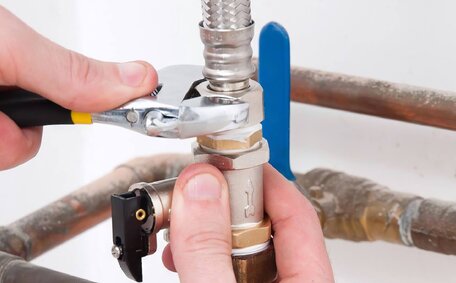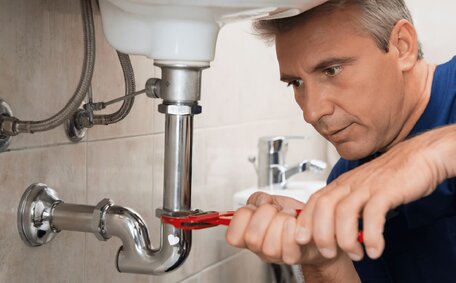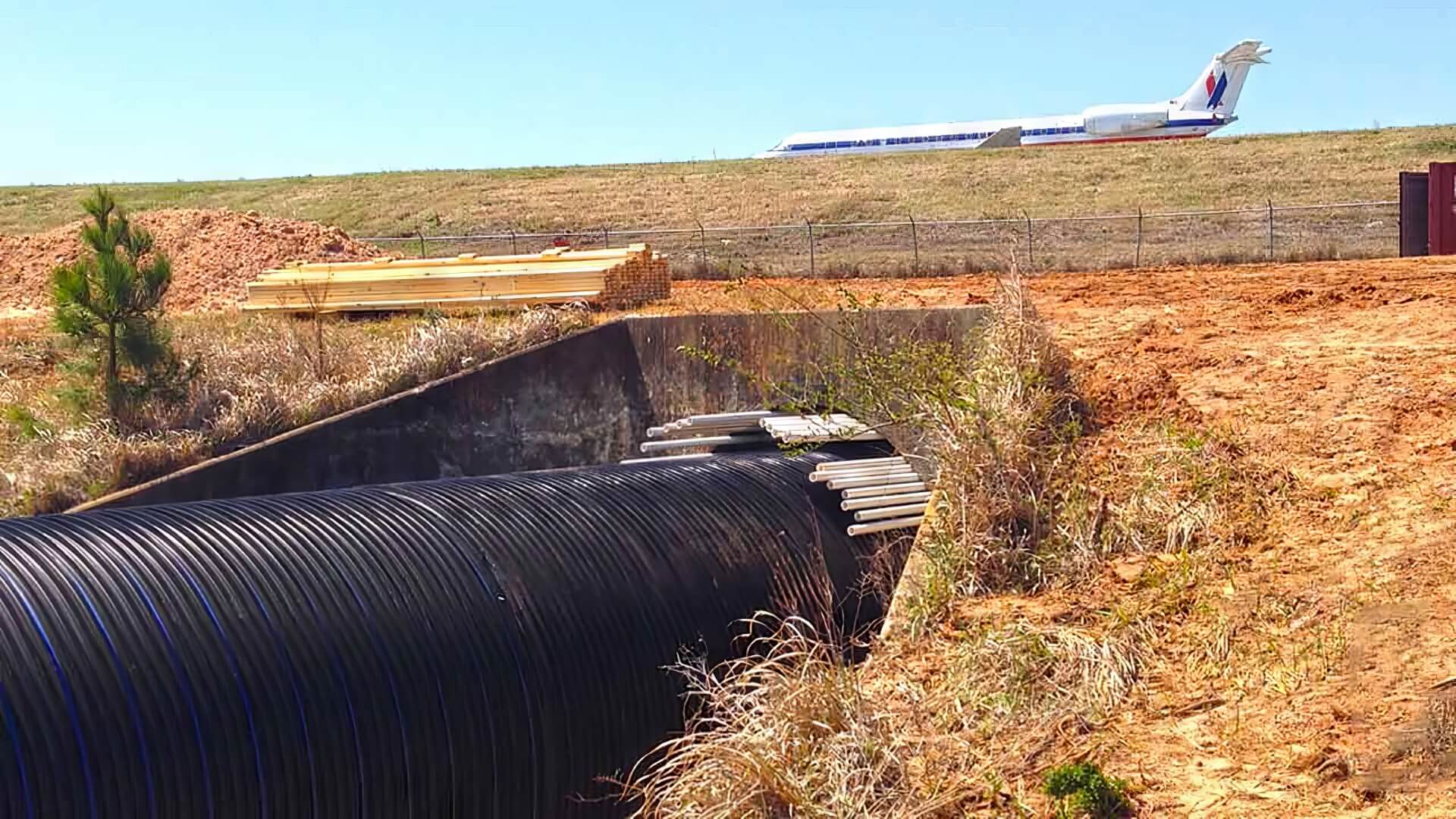
Is a broken tap an emergency?
A broken tap that is causing flooding, water wastage or damage should be treated as a plumbing emergency. Call our 24/7 emergency plumbers for prompt repairs to burst pipes, damaged taps, water leaks and more.
Read MorePipe relining modernises plumbing by rehabilitating aged or damaged pipes without the need for complete replacement. This technique employs a resin-impregnated liner which hardens to create a robust new pipe within the original casing.
Trenchless relining methods improve pipe durability and strength with minimal disruption to the surrounding area.
Testing the integrity of relined pipes, which includes pre- and post-relining CCTV inspections and high-pressure water jetting, confirms the pipes are leak-resistant and pressure-tolerant.
Additionally, high-pressure water jetting is used to pristine clean and prime each pipe section before assessment.
Confirming pipe integrity post-relining ensures successful outcomes and long-term functionality. Additionally, new patching methodologies enable precise repair of isolated damage in drain pipes.
Pipe relining is suitable for a broad range of project sizes, offers a faster installation compared to full replacement, and typically includes long-term warranties.
Postponing relining can lead to persistent blockages, intrusions by tree roots, and possible pipe failures. Pipe relining circumvents the significant disturbances and expenses associated with total pipe replacement, maintaining your property’s structural integrity.
Before initiating pipe relining, it’s imperative for plumbing experts to first execute CCTV inspections of the pipes. Specialised CCTV drain cameras are fed through pipes to thoroughly appraise their condition and identify any blockages.
The camera transmits a live video feed, allowing for the identification of any pre-existing issues such as cracks, blockages, tree root invasions or other damage.
The CCTV inspection yields essential details that guide the tailored pipe relining solutions needed, be it comprehensive relining or precise patch repairs. Comparing the pre and post-relining footage validates that the pipes are now free of defects, restored to proper function, and ready to reliably serve the property long-term.
It also establishes benchmark footage of the pipe layout and condition before relining work begins. After cleaning the pipes with high-pressure water jetting, an additional post-installation CCTV inspection should be conducted.
CCTV drain inspections are swift, economical, and non-invasive, obviating the need for excavation and preventing property damage. The enhanced visibility ensures our team plans and executes pipe relining work with precision for optimal results. With both pre- and post-project CCTV inspections, plumbers can verify relining effectiveness and provide clients complete quality assurance.
An essential step in preparing pipes for relining is thoroughly cleaning them beforehand using pressure water jetting. This technique involves firing an intense jet of water through the pipe to scour and remove any built-up debris, grease, calcification deposits or intruding tree roots.
By clearing all obstructions, high-pressure jetting ensures the inner wall of the pipe has a clean surface that allows for optimum adhesion of the lining material during installation. It flushes out any lingering contaminants that could otherwise detract from the relining solution properly bonding and sealing.
Water jetting further benefits the environment by capturing all dislodged waste in a closed system for appropriate disposal, ensuring no pollutants taint nearby soil or watercourses. It’s also useful for clearing blocked pipes or section pipe collapses that may be obstructing CCTV camera inspection.
Following water jetting, plumbers rerun CCTV cameras to conclusively verify the resolution of all damage and blockages. This post-jetting footage gives total clarity on the pipe layout and condition immediately prior to relining, ensuring there no lingering issues that could undermine long-term integrity and performance.
When it comes to pipe relining, selecting the appropriate resin material is critical for ensuring the long-term integrity and performance of the repaired piping system. Epoxy resins are commonly used as they can set rapidly and form a robust, seamless new pipe lining that lasts for decades within the old pipe.
Throughout the relining process, plumbers evaluate pipe dimensions, pressure loads, flow dynamics, and temperature conditions to choose the correctly formulated liner. The resin must have suitable viscosity to thoroughly coat the interior walls, along with adequate strength, hardness, and chemical resistance once set.
Advanced epoxy resins now exist with added capabilities like flexibility, anti-microbial properties, or resistance to growth of biofilms. Liner setting times can also be adjusted to suit specific job requirements.
A vast selection of relining products necessitates professional guidance to elect the optimal solution for durable restoration and enhancement of pipe functionality.
Once new pipe relining installation is complete, it is crucial for plumbers to perform follow-up CCTV drain inspections to validate the job. This involves re-running a CCTV camera through the length of pipe and thoroughly checking the footage for any defects or pipe relining needs.
The post-installation inspection verifies that the liner has cured and adhered properly all along the interior walls, with no gaps, bubbles or misalignments. The camera footage provides conclusive evidence of a smooth, uninterrupted pipe relining result.
Our team of plumbing professionals employs strict quality assurance procedures, rigorously verifying their work. Post-project CCTV assessments give plumbers – and clients – total confidence in the pipes’ restored functionality while proving relining was the right solution.
Plumbers should ideally perform inspections after 6 or 12 months to evaluate the relined pipes’ durability. This allows for early detection of any unlikely issues emerging over time. When installed correctly, relined pipes can endure upwards of 50 years before requiring further rehabilitation.
Pipe relining offers numerous benefits over traditional methods in restoring function to sewer pipes. The seamless epoxy liner forms a protective interior barrier within the existing pipe, restoring and ensuring functionality for many years. The key advantages for your sewer system encompass the following:
In summary, pipe relining provides non-invasive restoration of pipes at lower costs and with minimal impact on property compared to traditional methods. It’s a reliable, long-term solution for your plumbing.
When ageing or damaged pipes that have been in place for years need rehabilitating, homeowners face a decision between relining the pipes or wholesale replacement. Pipe relining yields significant advantages for pipe systems compared to complete replacements:
A single relining job can address multiple issues within a pipe network. Whereas replacement is done on a piecemeal basis, addressing only the most deteriorated sections of your drains.
Relining often presents a preferable option to full replacement, reinforcing structural integrity and sealing leaks more economically and with less property disturbance.
Homeowners must stay alert for signs indicating potential issues after successful pipe relining. Promptly addressing these problems helps prevent threats to the pipes’ restored integrity.
Key things to watch out for post-relining include your blocked drains returning, which might signal the need for drain clearing, gurgling noises from drainage fixtures, detectable odours, or structural cracks allowing water penetration. Such symptoms may indicate blockages within the pipes, joint failures, or ground shifts affecting the lining.
Plumbers highly recommend inspecting critical relined pipes with CCTV cameras every three years as part of ongoing maintenance. Infrequent inspections can unearth potential complications early, possibly requiring drain repairs. These inspections ensure the linings remain intact, without deterioration or detachment.
In case of issues, a timely call to a professional can lead to assessment and implementation of the appropriate remedy. To avoid expensive damage from leaks, collapses or floods, it’s important to get touch with a plumber at the first sign of trouble.
With periodic checks and timely attention when problems arise, quality pipe relining should reliably serve properties for 50 years or more. Preventative maintenance is essential to protect the plumbing integrity of homes for the long term.
A broken tap that is causing flooding, water wastage or damage should be treated as a plumbing emergency. Call our 24/7 emergency plumbers for prompt repairs to burst pipes, damaged taps, water leaks and more.
Read MoreBurst pipes, blocked toilets, sewer backups and lack of hot water are among the most common residential plumbing emergencies that require urgent attention from a professional plumber. If you experience any of these issues, call our 24/7 North Ryde emergency plumbers right away for fast, reliable service.
Read MoreTo determine if a relined pipe meets safety standards, professionals use equipment like CCTV cameras and hydrostatic pressure tests. Relining pipes is an affordable, non-invasive alternative to full replacement that can extend pipe lifespan 50+ years if done properly.
Read MoreNorth Ryde, 2113 NSW
We will call back as soon as possible.




